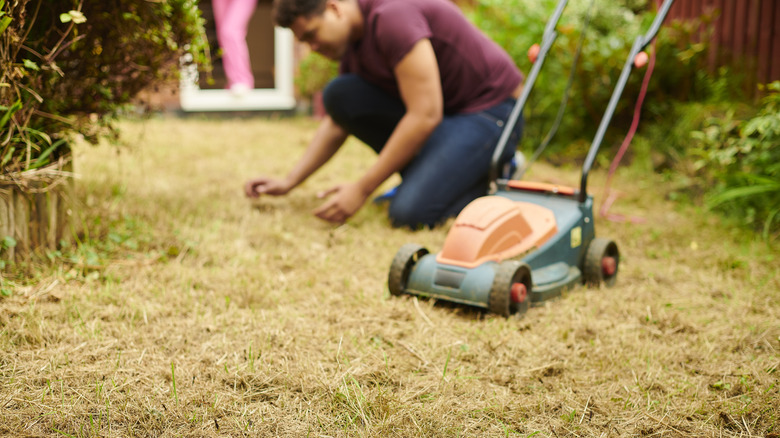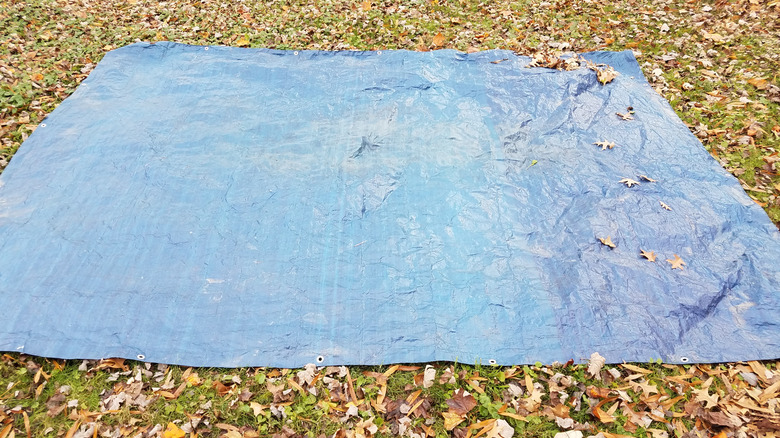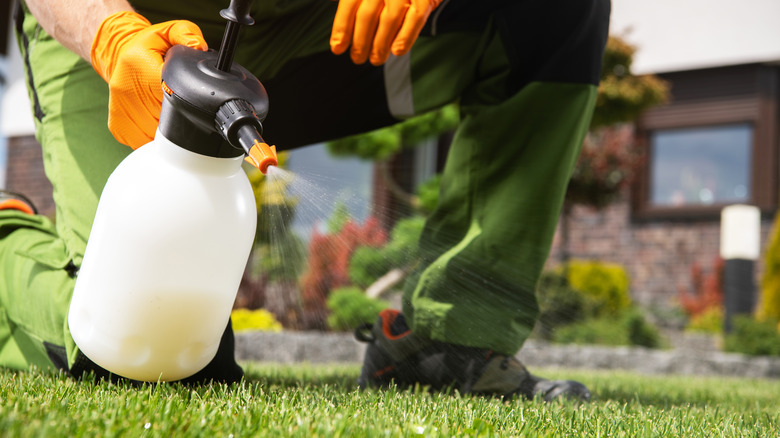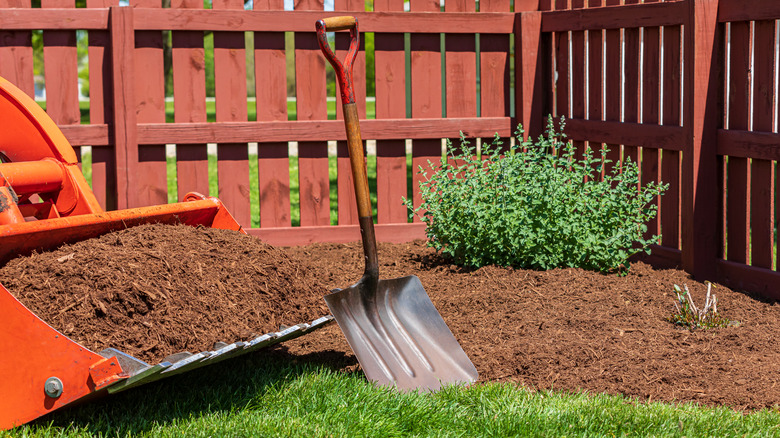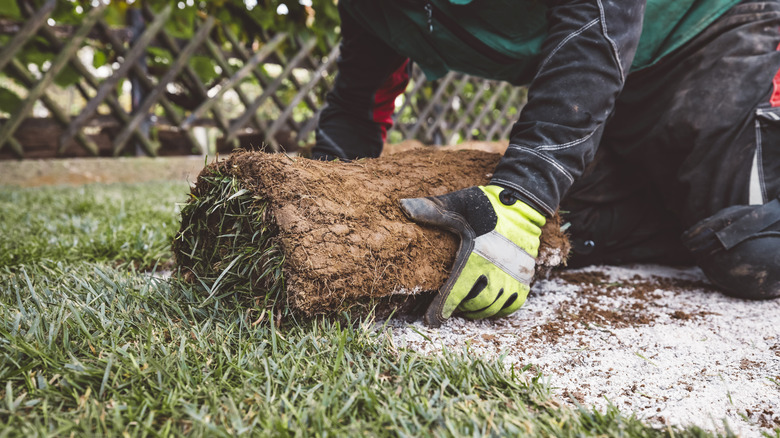The Easiest Ways To Kill The Grass In Your Lawn
Killing the grass in your front or back yard might seem like a task no person would take on intentionally, but it's often much easier said than done. Thankfully, there are a few methods you can use to help make the process flow a little easier and — according to the anti-lawn movement — plenty of benefits to removing your existing lawn in favor of something new.
Grass lawns are difficult to maintain, so if you're trying to cut back your expenses or skip out on difficult manual labor, replacing it with something a bit more natural might be the way to go. Swapping non-native grasses with wildflowers and plants for pollinators can also allow you to take a more environmentally friendly approach to your outdoor spaces. Additionally, if you live in an area that faces frequent droughts or requires you to ration water, a grass lawn can be a major hindrance in keeping your usage low. Instead, remove the existing greenery and swap it with something that is perfectly happy to go a few weeks without water, like some decorative rocks and succulents. Your wallet will thank you.
Method 1: Herbicide
By far the simplest and least labor-intensive method to kill your lawn is by using a non-specific herbicide. Normal weed killers are designed to tackle the weeds that sprout up without damaging the existing grass, but a non-specific herbicide like glyphosate will kill pretty much anything growing in the area. Look for brands that specifically state that their product is a weed and grass killer for best results.
Once you have your herbicide on hand, spray down your lawn during a season when it's actively growing, and skip watering for two days after application. After about a week has passed, you should notice that the grass is beginning to die off — though you might need to go in with another round of your herbicide to ensure that you kill everything you want to remove. This method might be the easiest, but it can also cause issues with runoff into water sources and other people's lawns, so make sure you use non-specific herbicides with caution.
Method 2: Tarps
If you've had a lawn for a while, you've likely seen the impacts of stepping stones or plastic mats on the grass below them. If you don't want to rely on any chemicals to kill your grass, you can use the same principles in this phenomenon to accomplish the same task. To do this yourself, place a large tarp — clear or black is the best — over the area that you'd like to kill. The sun will heat up the grass below the tarp, eventually blocking off its necessary moisture and increasing the temperature of the soil to the point that the grass won't survive.
This approach is a bit more difficult if you're planning to clear out your entire lawn, but it's a great choice if you want to avoid introducing potentially harmful products. You can speed everything up a bit more by mowing your lawn much shorter than recommended to increase the chances of the grass dying.
Method 3: Vinegar
For a slightly more holistic approach, consider using vinegar to help kill your lawn. Unfortunately, the typical household vinegar you use to keep your house clean or make salads won't cut it in this situation. Instead, you need to use higher-concentration horticultural vinegar that requires you to approach it with a bit more caution.
This method is fairly similar to using normal pesticides — the product itself is just a bit less harsh and more approachable to the average person. That doesn't mean, however, that it's completely safe. Distilled white vinegar for household uses is diluted to 5% acetic acid and 95% water, cleaning vinegar is 6% acetic acid and 94% water, and horticultural vinegar is a whopping 20 to 45% acetic acid and 80 to 55% water. Because of this, you should treat it the same way you treat any other harsh chemical: Use caution, keep it away from pets and kids, and wear gloves or a mask if necessary.
Method 4: Mulch
Using the sun and a tarp to kill your grass can take quite a bit of time and look unsightly throughout the process. For a natural option that won't look quite as out of place, consider heavily mulching. This is fairly similar to the thought process behind the tarp, so mow your lawn extra short before you plan to kill it, and cover it with an extra-thick layer of mulch.
If this layer is too thin, the grass will just continue to grow through the mulch, so don't be afraid to add what looks like overkill. You need a layer thick enough to trap the heat from the sun without giving the roots much breathing room — so 10 to 12 inches, while a large amount for normal applications, is perfect. Check in every week or so to see the status of your grass, then either leave the mulch or remove it to seed or plant your new ground cover.
Method 5: Physical removal
Removing your existing grass can be quite difficult to do, but with the proper tools, anyone can pull it off. Grass doesn't have a very deep root system, so it's fairly simple to lift it from the surface of your yard using a shovel or sod cutter. Cut it into strips and roll it up like carpet, making sure to shake out as much soil as possible, and you'll be able to replant whatever your heart desires in the newly-empty space. Make sure to discard the grass in the compost or set it out on the curb — you don't want it to just sit on the ground and accidentally reroot despite your hard work.
Completely removing your existing grass might be a last-ditch effort approach to lawn care, but it opens you up to plenty more eco-friendly and lower-maintenance decorative choices in your outdoor space. Once you remove your existing grass, you're free to explore much more than the cookie-cutter, water-wasting lawns that are the norm in most neighborhoods.
